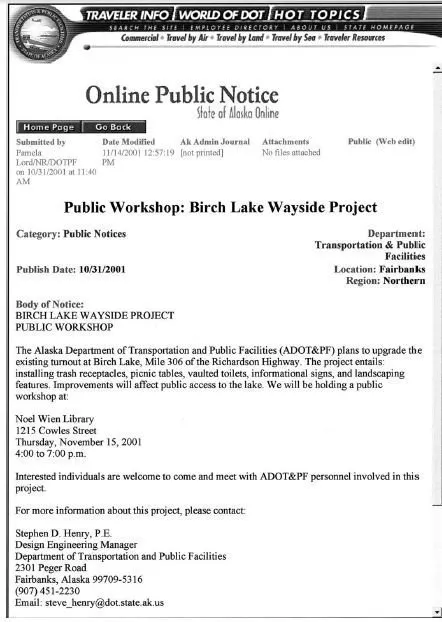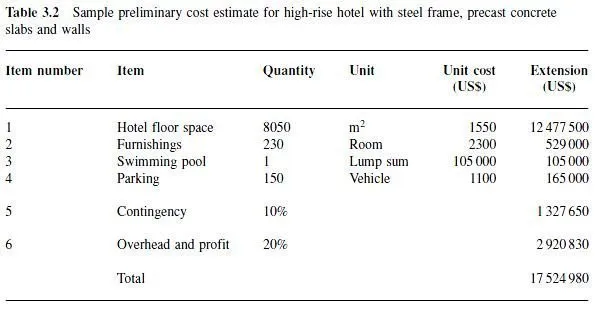In order to determine whether an alternative under consideration is financially feasible, an estimate of its cost is needed. During the planning process, such an estimate cannot be made with a large degree of precision, as we indicated in our discussion of the role of the cost estimator. Usually the estimator uses some broad measures of cost to develop the estimate. For example, the cost of a multi-storey concrete parking structure may be estimated based on the number of vehicle spaces multiplied by a historic construction cost per vehicle space for the locality; the costs of any extraordinary features such as a toll station or extra-long approach ramps would be added to the estimate. In the case of a single-storey apartment complex built of timber, an estimate based the cost per square metre of floor area might be prepared. Extras such as a swimming pool, parking areas and public common rooms would be estimated separately. Sources of this per-vehicle space or per-square metre cost information include the planners own records of historic data from previous projects and various published databases, either in book or electronic form. Example cost data sources are Rawlinsons Australian Construction Handbook (2001) in Australia and New Zealand and Means Square Foot Cost Data 2002 Book (2002) in the USA. Table 3.2 shows a sample preliminary cost estimate for one alternative of a hypothetical proposed hotel project.

